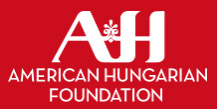William Penn Life, 2011 (46. évfolyam, 1-12. szám)
2011-02-01 / 2. szám
M|ij Tibor s Take with Tibor Check, Jr. Happy 125th Birthday, WPA! CONGRATULATIONS to every member of our fine fraternal organization upon reaching it's 125th year of existence! Without a doubt, William Penn Association is the group to belong to if you are of Magyar lineage and heritage. As a student of history, I ponder not only the past but also the implications of our future evolution as individuals and as a group. I first consider the past and what could have—or should have—happened. In the Christmas classic, It's a Wonderful Life, the non-existence of George Bailey (György) shows everyone just how far-reaching a person's influence is on others he didn't even know. My question is how will our past reflect upon the future of American-Magyars and William Penn Association? As I lay in front of our family's Magyar Karácsonyi fenyő, on that cold fortnight before Christmas, I began to analyze WPA and the state of our American-Magyar communities from three perspectives:-1. from the inception of William Penn Association to 1991 (my birth year);- 2. from my birth to now (1991 to 2011); and- 3. from now to the year 2086, (the 200th anniversary of WPA). Perspective #1 (1886-1991)- Questions Did the Founding Fathers of the Verhovay Aid Association ever imagine that such a huge metamorphosis and expansion could have have taken place in the past century and a quarter? Their simple intention was to offer a bit of financial protection to their families and ethnic cohorts. Did they ever think their idea of Magyar Fraternalism would expand to just about all of America's 50 states and beyond? If not for the Darr Mine Disaster of 1907, do you think WPA would have ever expanded to it's huge numbers? Would one of the other Hungarian-based and nowdefunct or merged Magyar insurance/fraternal groups have come to the forefront and become what WPA is now? The Golden Age of Hungarians in America was from the end of World War I to the mid 1970's. New York City, Pittsburgh, Detroit, Cleveland, Youngstown, New Jersey, Connecticut and, of course, Hollywood—all were dominated politically, economically and culturally by Hungarian-Americans. Just about every town of substance had Hungarian butchers, bakers, doctors, tailors, lawyers and other specialists necessary for ethnic individuality. William Penn Association was no different in it's prominence in those communities. Scores of William Penn clubs and branches sprung up in those areas like mushrooms after a rain storm. I recently saw an old photograph of my late grandfather and his brother, Uncle Mike Cseh, with other members of their William Pennsponsored bowling team. I learned it was commonplace for Verhovay to back just about any sport or activity that was organized and contained members of the WPA. Today, very few Magyar specialists survive. I wonder: if the aforementioned had continued to thrive, would our music and culture be thriving today as well? Except for Calgary and Alberta in Canada and Árpádhon in Louisiana, Magyar agricultural communities are nearly non-existent. I know in my area there used to be farms with names such as Molnár, Szalay and Lakatosit, but the number of farms under Magyar-American ownership are now few and far between. Most other European nationalities have large numbers of their own people in farming communities here. Why not us? Hungary was and still is mostly an agrarian country. Why did those immigrants choose to work in the cities at industrial jobs? My great-uncle, Joe Kessler, left the Detroit area with his entire family to pursue his lifelong dream of owning a dairy farm. They settled in the area of Antigo, Wise. He passed away in the 1990's, but most of the family stayed and continue to farm. My dad recalls Uncle Jóska saying, "There's not a Hungarian within 75 miles of here!" Why did so few of our people choose not to farm? Perspective #2 (1991 -20II)- Observations I attended St. Margaret of Hungary Church (until it was forced to close), ate at several Magyar-themed res-8 0 February 2011 0 William Penn Life
